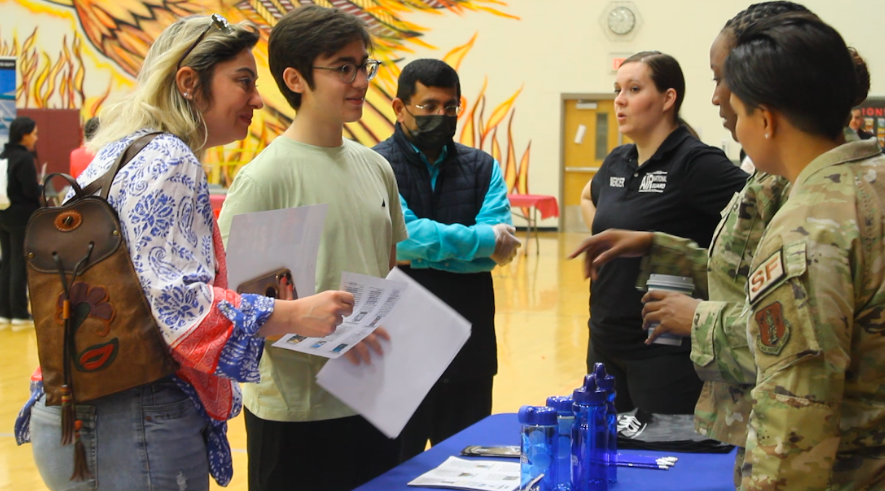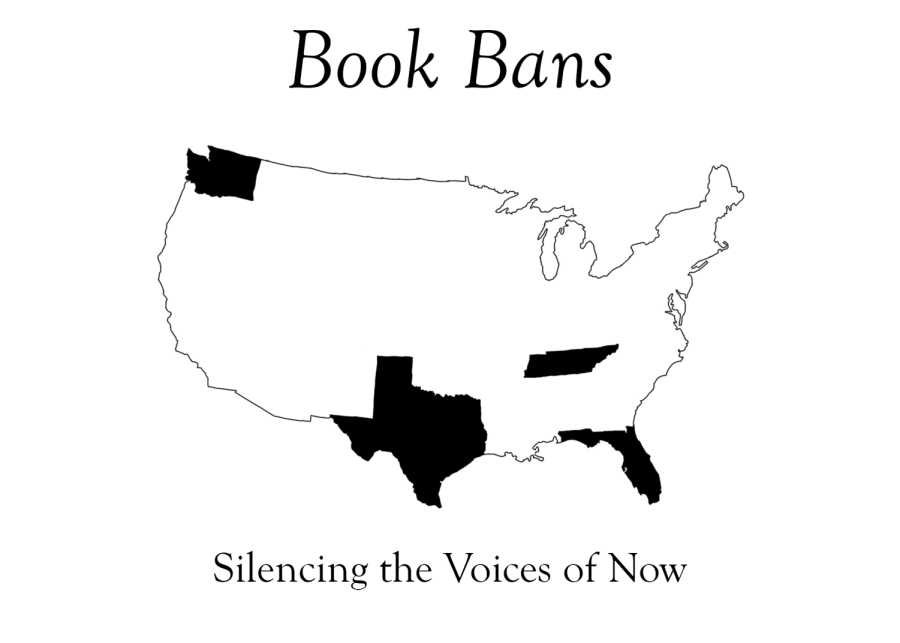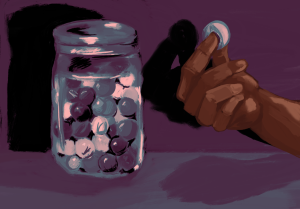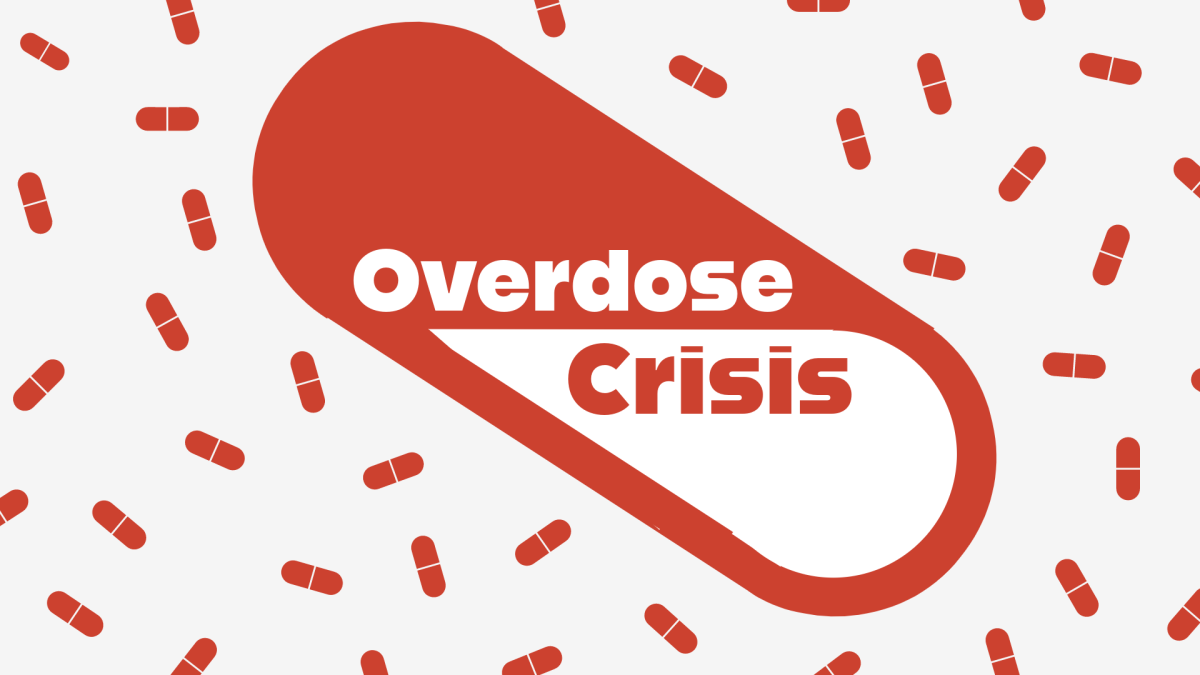Recently, Loudoun County Public Schools (LCPS) has experienced several overdoses, eight of which occurred over a time frame of three weeks at Park View High School. In response to this, LCPS has sent emails to parents and staff containing crucial information about naloxone, educational events regarding opioids, and other resources to increase vigilance for unprescribed medication and drugs potentially containing fentanyl. “The use of this powerful, synthetic opioid is affecting young people across the nation, and sadly our LCPS students are no exception,” LCPS superintendent Aaron Spence said in an email sent home to parents on Nov. 1.
One pill can kill, the slogan that was part of a campaign from the Drug Enforcement Administration (DEA), aimed to emphasize the dangers surrounding fentanyl and its lethal power. The Loudoun County Sheriff’s Office (LCSO) and Loudoun County government have taken numerous actions to spread the facts about the dangers of fentanyl and other opioid related drugs, including putting multiple road signs down prominent Loudoun County roads and releasing a quick all-in-one fact sheet about opioids as a whole on the official Loudoun County website.
The painkilling opioid has made its way into the drug market by being laced into other drugs and sold. It is often added to drugs or pharmaceutics to make them more powerful and addictive while making production cheaper. Between the years 2019 and 2021, at least 1800 adolescents died from using fentanyl, and in most cases, victims took what they believed was medicine to treat pain.
Due to the recent surge in fentanyl cases across the county, parents, staff, and even students are growing more aware of the dangers associated with fentanyl. Student Assistant Specialist Fiona Brown believes that there is still a stigma around the topic of drugs within a school that needs to be addressed before the issues surrounding fentanyl can truly be tackled. “It [impacts]part of our mental health, it [impacts] part of our physical health, it [impacts] part of our academic health, it [impacts] part of our relationship health, it’s so important,” Brown said. “It affects all parts of our life.”
According to the CDC, Fentanyl is a synthetic opioid, and medically, it is used post-surgery on patients who are experiencing severe pain. It is also used in advanced-stage cancer. Nurse Steven Parks, who joined Rock Ridge this year, stated that opioid-related overdoses are hard to identify at a glance. “[Opioids] overdoses target the respiratory system,” Park said. “[Shutting the system down] and making it difficult to breathe.”
Hard to Spot, Easy to Kill
Fentanyl is dangerous because any pill, or food item for that matter, can be laced with it, and there would be no way of knowing just by looking at it. “The fact that it’s odorless, it’s tasteless, it’s colorless — I mean, that is pretty scary,” Brown said.
The only way to test whether or not something is laced with fentanyl is to use a fentanyl test strip; however, these do not tell the user how much fentanyl is in the drug. This makes it difficult for patients, who may be required by a physician to take drugs with fentanyl in them, to know whether or not the pills contain the normal amount, or have been laced with more.
It’s 50 times stronger than heroin and 100 times stronger than morphine. 2 milligrams, or the size of a pencil tip, is enough to kill. “It’s tiny, it’s cheap, and it’s deadly, and there are no second chances,” DEA administrator Anne Miligram said in a public service announcement from the DEA.
There are numerous different mental and physical attributions that a student, teacher, and parent could use to identify potential users of fentanyl.
For the mental effects, fentanyl, and any opioid drug in general, affects the brain in predictable ways, according to Brown. Fentanyl in particular can make someone behave in a way similar to depression. “You might see that they’re more anxious, you might see that they’re isolating themselves from people who really care about them, spending more time with other peers who are using and doing the same things, you might see a drop in grades for them,” Brown said. “A lot of these sounds like ‘oh, that person is really depressed,’ right?”
On the other hand, the physical characteristics of fentanyl addiction include slow response rates, dilated pupils, nausea/vomiting, slow breathing, diarrhea, and/or fast heart rate. While Brown focuses on helping students after an overdose, Park’s job is to deal with the immediate identification of an overdose and administration of naloxone. “If the person took a lot of opioids [and] depending on the quantity, depending on the combination, if one dose is not effective, then we will continue with the second, possibly third dose, or more doses [of naloxone, depending on the situation],” Park said.
Both Park and Brown’s jobs work in tandem to ensure students are getting immediate medical treatment and long-term psychological help to overcome an overdose and its effects. Park stated it’s also up to the faculty and staff here at Rock Ridge who interact with students on a daily basis to keep an eye out for any signs of concern. “I would follow up on that during the event, obviously,” Park said. “[And] also [to] check for what the update is after the hospital visit if it went that far.”
Look for the Signs, Help Someone Survive
According to the CDC, signs of an overdose include pale and clammy skin, unresponsiveness, gurgling sounds, and slowed breathing and heartbeat.
Park, due to the recent surge of fentanyl overdoses in Loudoun County schools, has aimed to educate faculty, parents, and even students about the dangers of opioids and what to do in that situation. “I’ve been working on updating the school website for my health page to have information on training that I provided,” Park said.
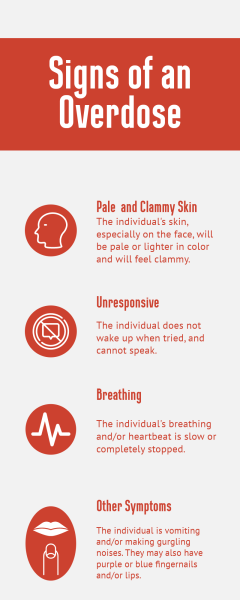
In response to someone else experiencing a fentanyl-related overdose, calling 911, or texting/calling the Substance Abuse and Mental Health Service Administration’s national helpline are important steps to help. Administering naloxone, a medicine that reverses the effects of fentanyl and can prevent an overdose if taken immediately, is an important next step. Additionally, lying the victim on their side prevents choking on vomit or the drug.
Check Your Socials, Pills, and Candy
Increasing this danger is the recent development of drug dealers using social media to advertise, sell, and deliver their drugs by targeting younger audiences who reflect higher social media usage. Dealers advertise their drugs in stories or posts that disappear after 24 hours on platforms such as TikTok, Snapchat, Twitter, and Instagram; they then sell and deliver these drugs, many of which contain fentanyl, right to their customer’s doorstep.
Alluding to the purchases made on social media to acquire drugs laced with fentanyl, DEA administrator Anne Miligram referenced the issue in her public service announcement. “No legitimate medication can be purchased on social media,” Miligram said. “Fentanyl is everywhere: from large metropolitan areas to rural America, no community is safe from this poison.”
To prevent fentanyl from entering the body by taking non-prescription medicine, Brown stresses that drugs that did not directly come from a pharmacy have to be assumed to contain fentanyl. “The only safe place to get something is from a pharmacy,” Brown said. “Even when somebody thinks they’re taking a prescription medicine, which most people imagine would be safe if that medicine didn’t come prescribed for that person by a doctor [from a pharmacy] and stay in a safe place in their house, we have to assume that anything could contain fentanyl.”
It is not just pills that can contain fentanyl, however. There have been many cases of fentanyl and other drugs being put into foods such as candy. Although this is uncommon compared to finding pills laced with fentanyl, it is still a possibility. This is why it is important to check Halloween candy for signs of tampering, which may include ripped packaging and wrapper discoloration. The brand names on the wrappers may also be different, but slightly similar to the original name.
People who ingest fentanyl pills are at serious risk of overdosing, and this is why it is important to make sure that friends or people close to you are safe, especially if you are aware that they have a history of drug use. There are multiple ways to do this: talk to your friend directly, have a conversation with them about what they are doing, encourage them to reach out for help, and tell a trusted adult about the situation.
Students immediate actions in situations where every second counts can save lives. Though some may be scared this might anger a friend for some time, it is important to reach out to staff and faculty immediately, instead of waiting to intervene to not hurt someone’s feelings and letting crucial time tick by. This might make the difference between life and death. Students can reach out to Brown for long-term mental health effects of dealing with drugs, and to Park for immediate support in an overdose situation.


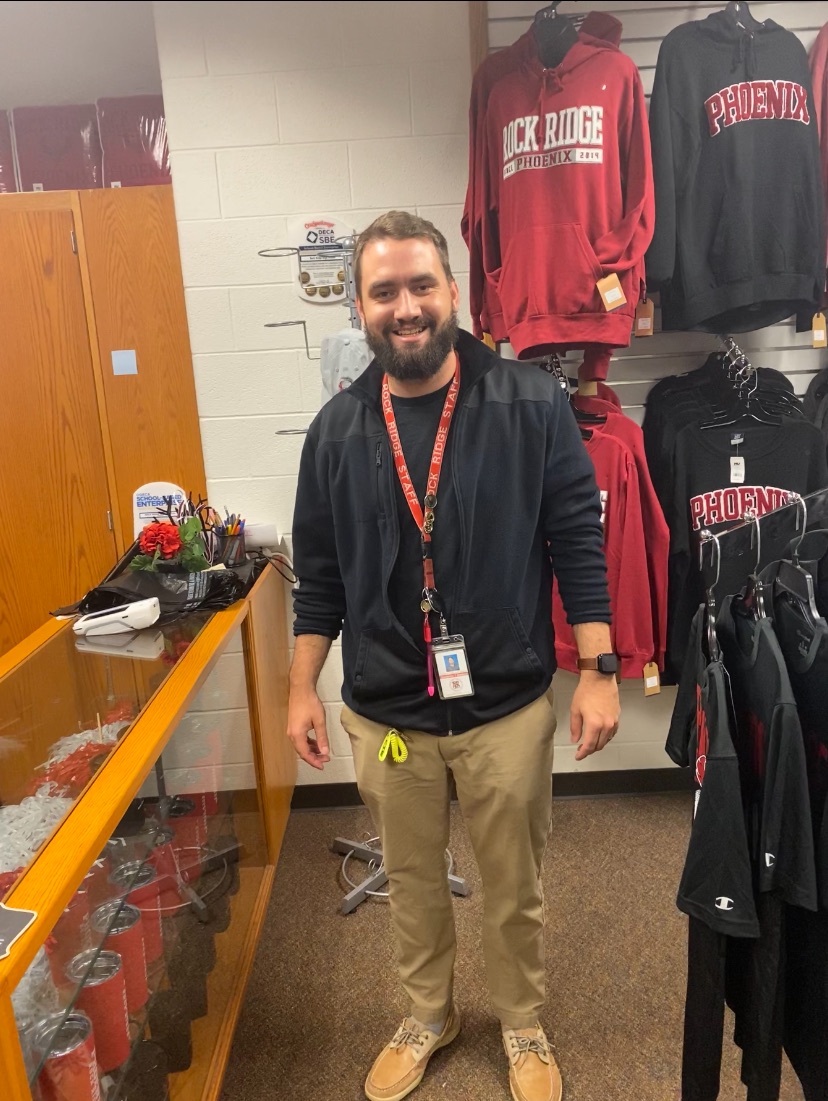

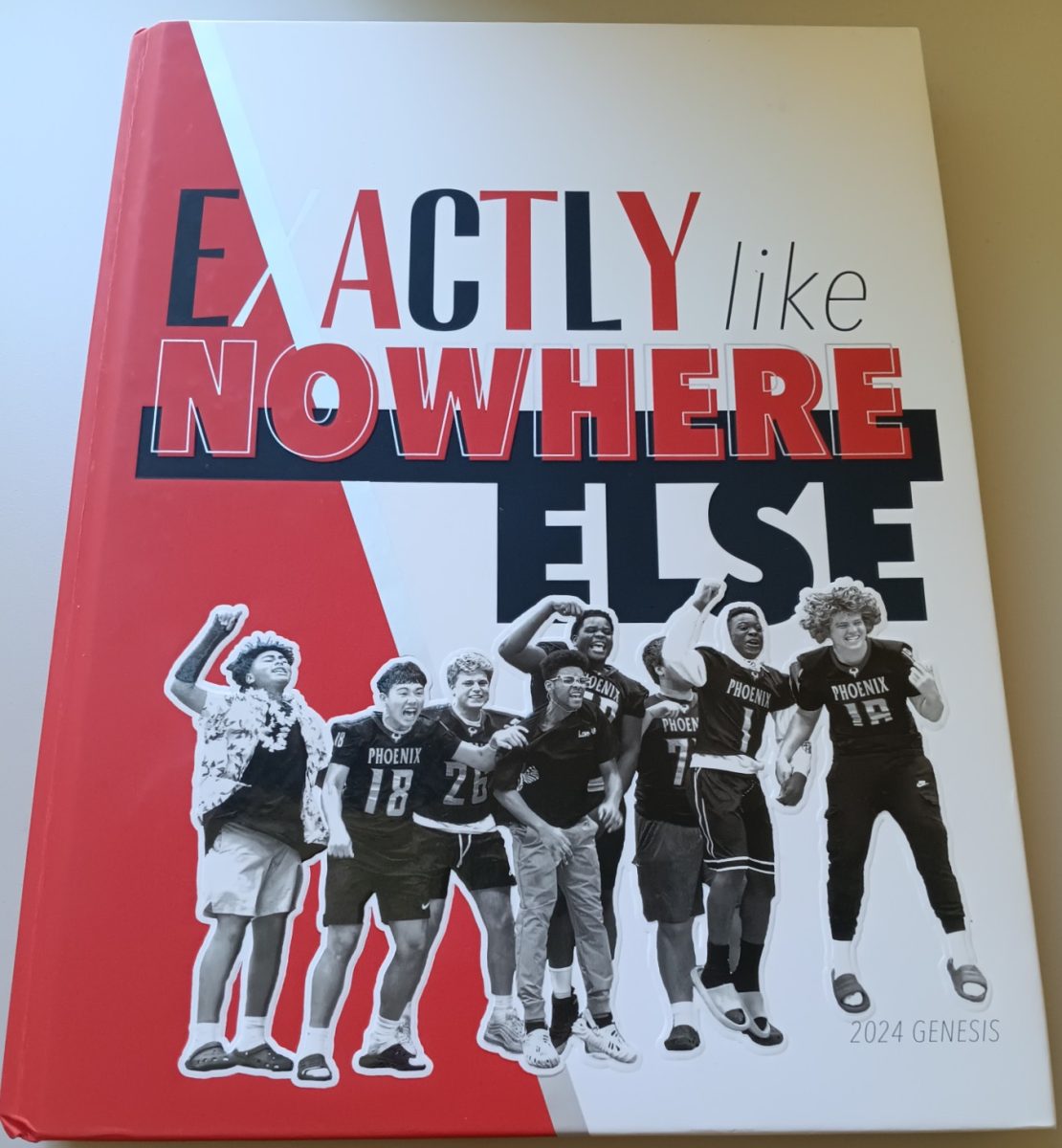








![Held up by a group of cheerleaders, flyer sophomore Leyu Yonas poses as part of a stunt, also supported by flyer junior Shayne Mitchell behind her. (Left) Prior to the pink out football game on Oct. 13, the athletes practiced in the aux gym from 5 p.m. to 6:30 p.m. (Right) On Oct. 19, the cheerleaders competed in their District Championships at Woodgrove High School. “We definitely put all our effort on the mat [at Districts], and it showed,” Mitchell said. Left: Photo by Nadia Shirr. Right: Photo by Steve Prakope via Victor O’Neill Studios.](https://theblazerrhs.com/wp-content/uploads/2023/11/feature-image-1200x823.png)
![Sophomore Xavier Smith (6), the Phoenix quarterback, runs the ball as his teammates help hold up the defense. “My [offensive] line collapses, so I just [have to run], and its a good way to get first downs because [Tuscarora’s] defense was really good,” Smith said.](https://theblazerrhs.com/wp-content/uploads/2023/11/IMG_5383-1200x897.jpg)

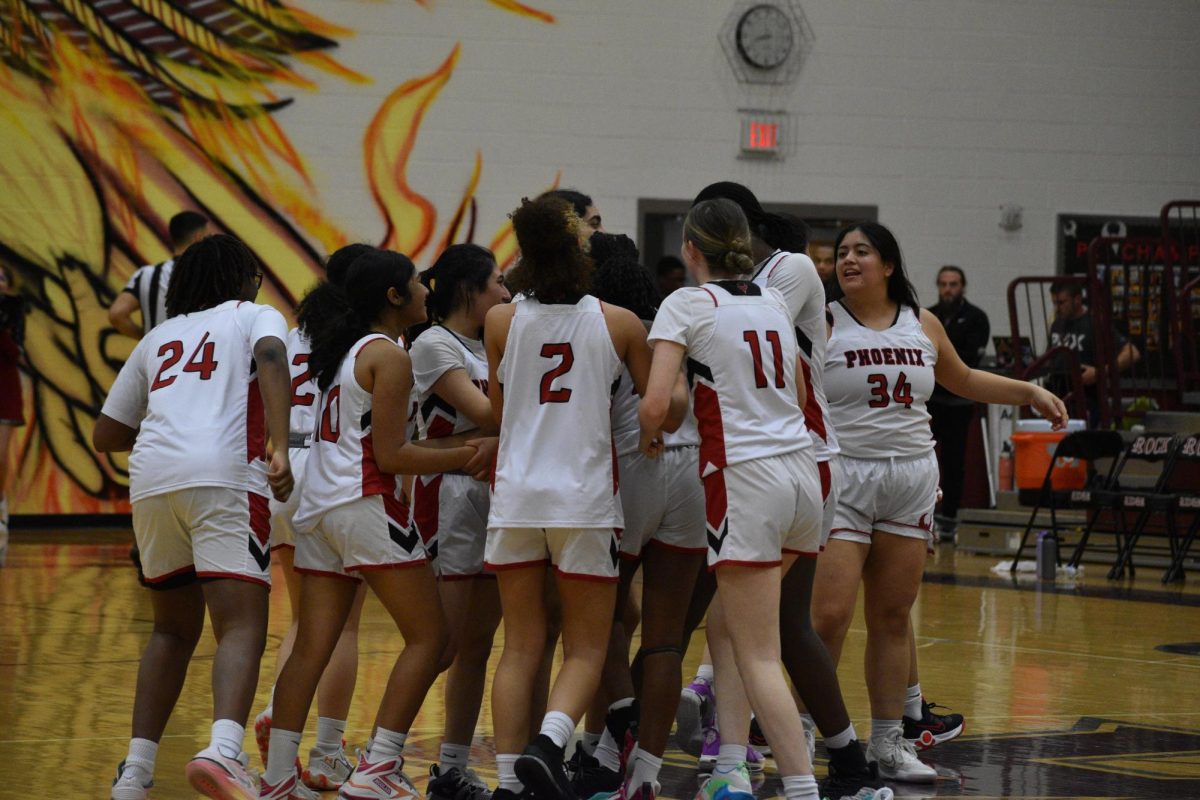

![As the referee throws the ball up for the tip-off, freshman Simone Diby leaps towards the ball to get it in Phoenix possession. Diby is a new member of the Phoenix girls basketball team, and despite it being a change, she finds it enjoyable. “It’s definitely a different experience if you’ve never played on a team, [but] I think it’s still fun.”](https://theblazerrhs.com/wp-content/uploads/2024/03/DSC_0057-1200x662.jpg)












